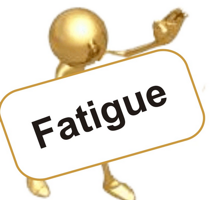Investigators from Japan looked at HHV-6 and HHV-7 DNA levels in saliva to see if they might be biomarkers for cancer-related fatigue (CRF) in multiple myeloma patients.
The group found a significant correlation between fatigue and poor survival. With only 16 patients, the study was too small to link HHV-6 and HHV-7 prevalence to fatigue. Of interest, 100% of the patients with no HHV-6 reactivation survived, compared to only 50% of those with HHV-6 reactivation. Unfortunately, the group evaluated prevalence instead of viral load, which is a more meaningful measurement for a ubiquitous virus. The rate of reactivation in myeloma patients was very high at 73% for HHV-6 and 54.9% for HHV-7.
A previous study on physiological and pathological fatigue in 2016 found that elevated salivary HHV-6 and HHV-7 DNA levels can be used as a biomarker to differentiate physiological fatigue (from excessive exercise or work) from pathological fatigue as is found in obstructive sleep apnea syndrome, chronic fatigue syndrome, and major depressive disorder (Aoki 2016).
Another study found that both HHV-6 saliva viral load and Chalder fatigue scale scores were both significantly higher in caregivers of people with dementia than in controls (Osaki 2016).
Finally, a study of leukemia patients published in 2015 demonstrated that saliva HHV-6 viral loads are much higher than viral loads found in blood and that high levels in the blood generally correlated with high levels in the saliva. Furthermore, they found that an increase in the HHV-6 DNA in saliva preceded an increase in the blood. The prevalence was much higher in saliva, however; the majority of leukemia patients were positive for HHV-6 or CMV in saliva, and negative in the blood (Nefzi 2015).
Read the full paper: Suzuki 2018.

